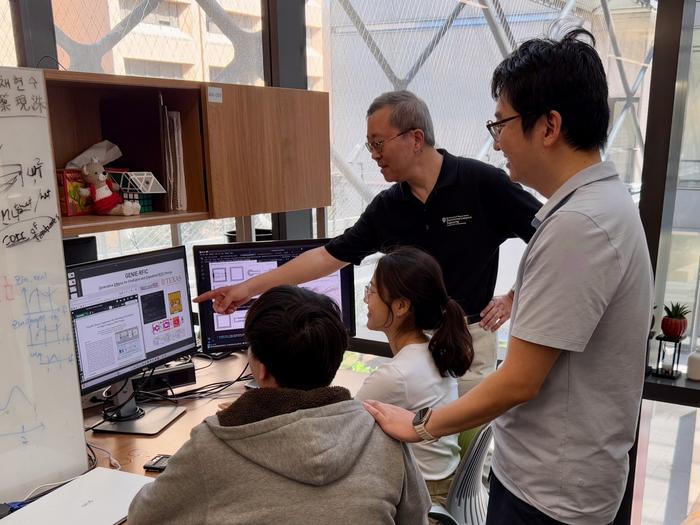Radio frequency integrated circuits (RFICs) are a pivotal component in the transition from current telecommunications systems to advanced frameworks, such as 5G and the upcoming 6G networks, as well as in multifaceted applications ranging from automotive technology to quantum computing. However, the process of designing these intricate chips presents considerable challenges. Not only is it an arduous task, requiring specialized knowledge and expertise, but it also demands substantial time and financial resources.
The arduous nature of RFIC design has been well-documented. According to David Pan, a distinguished professor in the Cockrell School of Engineering’s Chandra Family Department of Electrical and Computer Engineering and the principal investigator of the project, it typically takes engineers several months to create a single RFIC. This extensive timeline is due to the multitude of intricate tasks involved, including rigorous simulations and trial-and-error approaches. The aim of this project is to drastically reduce both the development time and costs through an advanced AI-assisted design workflow, which will also lower the entry barriers for newcomers to the field.
.adsslot_AjEY4NIi30{width:728px !important;height:90px !important;}
@media(max-width:1199px){ .adsslot_AjEY4NIi30{width:468px !important;height:60px !important;}
}
@media(max-width:767px){ .adsslot_AjEY4NIi30{width:320px !important;height:50px !important;}
}
ADVERTISEMENT
This innovative effort has garnered substantial financial backing, highlighted by a $9.6 million grant awarded for a period of 30 months from Natcast, a nonprofit entity responsible for operating the National Semiconductor Technology Center (NSTC). This funding is part of a larger initiative supported by the CHIPS and Science Act, which seeks to enhance all facets of semiconductor production within the United States. As one of the first awards under the NSTC’s Artificial Intelligence Driven Radio Frequency Integrated Circuit Design Enablement program, the grant signifies a strategic investment in an area crucial to the nation’s technological infrastructure.
The project, intriguingly titled “GENIE-RFIC: Generative ENgine for Intelligent and Expedited RFIC Design,” specifically targets silicon complementary metal oxide semiconductor (CMOS) RFICs as well as gallium nitride (GaN) monolithic microwave integrated circuits (MMICs). The AI-enabled tools being developed will focus on conducting rapid “inverse” designs based on predefined specifications, adeptly optimizing circuit topologies and parameters. This paradigm shift could dramatically alter the conventional workflow associated with RFIC design.
Currently, the design of RFICs entails extensive manual engineering, protracted simulations, and tedious trial-and-error processes—practices that restrict the field to a limited number of researchers and companies well-versed in the nuances of RFIC technology. The GENIE-RFIC project aspires to disrupt this norm by employing AI technologies to unearth unconventional designs and enhance them far more rapidly than traditional methods permit.
The research team is well-aware of the critical importance of their work. RFICs serve as the backbone for various technological advancements including high-speed communications, radar systems, and pioneering innovations like autonomous vehicles. By democratizing access to RFIC design through a more user-friendly AI framework, they hope to attract a more diverse pool of talent and ideas into the field. This could potentially catalyze a wave of technological advancements as novel applications of RFICs are discovered and explored.
Alongside David Pan, the project team includes esteemed colleagues in electrical and computer engineering, such as Amy Zhang and Sensen Li, as well as Adam Klivans, director of the Institute for Foundations of Machine Learning. Collaborators from other academic institutions bolster the initiative, encompassing notable figures from Purdue University, George Washington University, The University of Texas at Dallas, and Rice University. Industry partners play a vital role as well, with companies like IBM, Cadence, and GlobalFoundries participating in the project. Further expanding their influence, the team is also in the process of establishing a startup, CircuitGenie, to commercialize the transformative technologies developed through this endeavor.
An equally significant component of this project lies in its commitment to education and workforce development—a crucial aspect of the ongoing national efforts surrounding semiconductor innovation. In recognition of the need for skilled professionals in this domain, The University of Texas at Austin plans to launch a new master’s program focused on semiconductor science and engineering next fall. In tandem, institutions such as UT Dallas, Rice University, and George Washington University are working to create AI-themed summer programs that will provide valuable opportunities for K-12 and undergraduate students interested in the burgeoning field of RFIC design.
Through the leading efforts of the research team, supported by substantial funding and collaborative partnerships across academia and industry, the initiative signifies a promising leap toward revolutionizing RFIC design. In doing so, it hopes to unlock the potential of RFICs to address a myriad of contemporary challenges, ultimately leading to groundbreaking advancements in communications technology and beyond.
As we stand on the cusp of significant innovations in semiconductor technology, every stride made in improving RFIC design processes is positioned to have ripple effects across industry and society. By fostering collaboration, nurturing new talents, and leveraging AI, the field prepares for a new era of rapid innovation and expanded possibilities.
In the end, the opportunity to simplify and accelerate the design process of RFICs stands to transform the semiconductor landscape, ensuring that groundbreaking technologies continue to emerge, bridging the gap between today’s capabilities and the needs of tomorrow.
Subject of Research: Radio Frequency Integrated Circuits (RFIC) Design
Article Title: Revolutionizing RFIC Design: AI and the Future of Semiconductor Technology
News Publication Date: October 2023
Web References: Natcast
References: N/A
Image Credits: The University of Texas at Austin
Keywords
Tags: 5G and 6G chip technologyadvanced radio frequency integrated circuitsAI in RFIC designartificial intelligence in telecommunicationschallenges in RFIC developmentcollaboration between universities and industryenhancing accessibility of RFICsinnovative approaches to chip designrevolutionizing telecommunications with AIscalable designs for communication chipssimplifying communication chip designtime-efficient RFIC design processes





